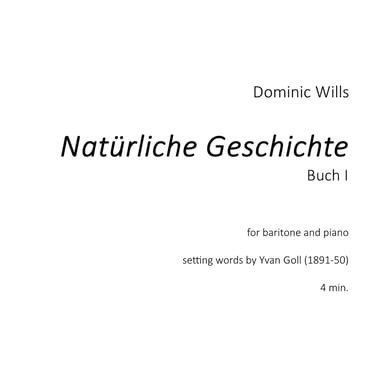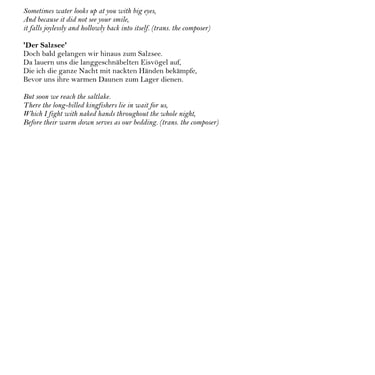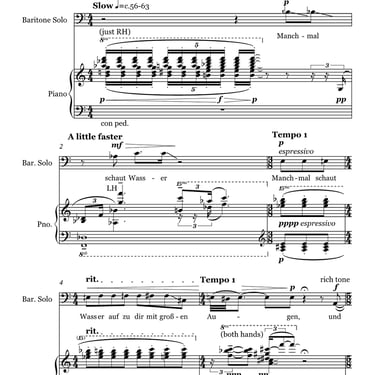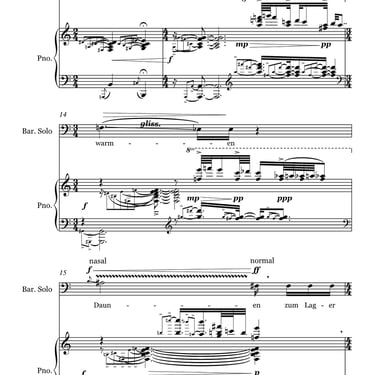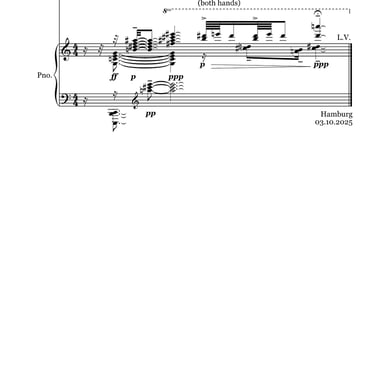Natürliche Geschichte, Buch I
(2025)
Composer's notes:
These two songs form the first instalment of a series of works for different instrumentations based on drawings by Max Ernst. To create the drawings, Ernst would start by placing a sheet of paper above a natural surface, such as stone or wood, and then rubbing with his pencil, transferring the natural patterns onto the page. He would then bring out shapes from the rubbings using a pencil freehand, finding faces, horses, eyes and so on within the natural patterns.
As a composer with a great love of birdsong, this procedure interested me hugely, above all the idea of finding recognisable shapes within nature. It is by no means completely random that certain shapes keep appearing, all sorts of geometric and physical laws lead to convergences, just as acoustic laws lead to convergences between birdsong and human music. Chance too, of course, plays an important role.
To create the first of these songs, I slowed down a recording of a nightingale and a chiffchaff singing, which I had made in Greece, and selected an extract which seemed to me to have pleasing, musical proportions. I then transcribed every note I could, as faithfully as my ears would allow me. When transferring this transcription to the form of a song, I was allowed to add material in the form of counterpoints, repetitions and harmonies, but not to remove it. The second song uses the same procedure, but this time the bird singing is the much more consistent blackbird, which I recorded on my daily walk.
The text was a comparably late addition, partly inspired by the drawings which each piece is
associated with. I was interested to see if I could use my metaphorical freehand pencil to shape each song so that it reflected the form of Yvan Goll's texts.
This wonderful recording was made with Will Jowett and Hanna Csermely at the "Arts in 1925 France" Conference in Leeds.
Duration: 5'
Instrumentation: Baritone voice and piano
First Performance: "Arts in 1925 France" Conference, Leeds (14th November 2025).
